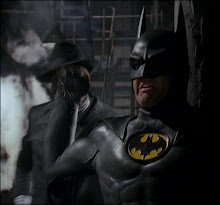In Part 1, we had an overview of the special election in 2012 to fill the Congressional seat that Congresswoman Giffords vacated due to her injury, including a glimpse of the candidates. The focus of this series has been on situation facing Martha McSally, a former Air Force fighter pilot, the first woman fighter pilot in combat and the first woman to command a fighter squadron.
In Part 2 we looked at what McSally was up against - not her opponents in the election... the corruption in Washington and beyond that was resulting in the problems her district faces and which she would have to deal with in Washington, should she win a seat in Congress.
In Part 3 we looked at the in-fighting among the Democrats, and saw how the Democrat powerbrokers are not really "pro-choice" when it comes to a democratic election; in fact, the strategy of the Democrat powerbrokers was to eliminate all competition (even the Greens) in the district and polarize support on the left, while hoping that competition would weaken the Republican side.
Ultimately, McSally lost in the special election primary to Jesse Kelly. Kelly then lost to Democrat Ron Barber.
However, this was not the end of the fight for McSally. From the beginning, it was apparent McSally was in this for the long haul, and was ready to face some set-backs. She went into the special election determined to become the Congressional representative for that part of Arizona. Thus, win or lose in the special election, she was determined to run again in the redistricted Congressional District 2, which represents the same part of the state.
So, in the November, 2012, election McSally prevailed as the Republican candidate, but then lost to Congressman Barber who sought to retain a seat he had won in the special election.
This is interesting, because Barber's entry into the special election suggests that he did so at the last minute and perhaps only intending to hold the CD8 seat while someone else could line up for the regular redistricted CD2 election – in sharp contrast to McSally, who from the beginning had the seat targeted.
So, what is happening was actually predictable and predicted.
After Jesse Kelly lost, once in 2010 to Giffords, then again to Barber in the 2012 special election, the Republican mantel passed to McSally – see NY Times 2012 House Race Ratings - who, despite her loss in the 2012 general election, is trying for the seat again.
And, again, McSally is going to face a primary fight. First, on September 28, Ed Martin announced his candidacy, then, on November 5, Shelley Kais announced hers.
It will definitely be an uphill battle for Martin and Kais. McSally already had a campaign apparatus in place, she has a following, and she is raising money. Significantly, though the pundits suggest McSally is going to be getting backing from Republicans on a national level, as I look over the campaign finance reports filed on her behalf with the Federal Election Commission, I notice that nearly all of the money that has come in for her is from individual contributions. McSally seems to have popular support. It does not look like Martin or Kais have done significant fund-raising.
The incumbent, Democrat Ron Barber, has some money and some support.
Analysts correctly identify Barber as vulnerable, since his district is a swing-split ticket district and is contestable. On the Democrat side, big names are rallying behind someone they consider to be vulnerable; specifically, Nancy Pelosi's leadership PAC, PAC to the Future, has already given Barber $10,000 this year – thus a tie-in to another series I started today.
It looks again like the Democrats will not permit any dissidence, while the Republicans can expect a fight in the primary.
Stay tuned as this series continues.
Subscribe to:
Post Comments (Atom)








No comments:
Post a Comment